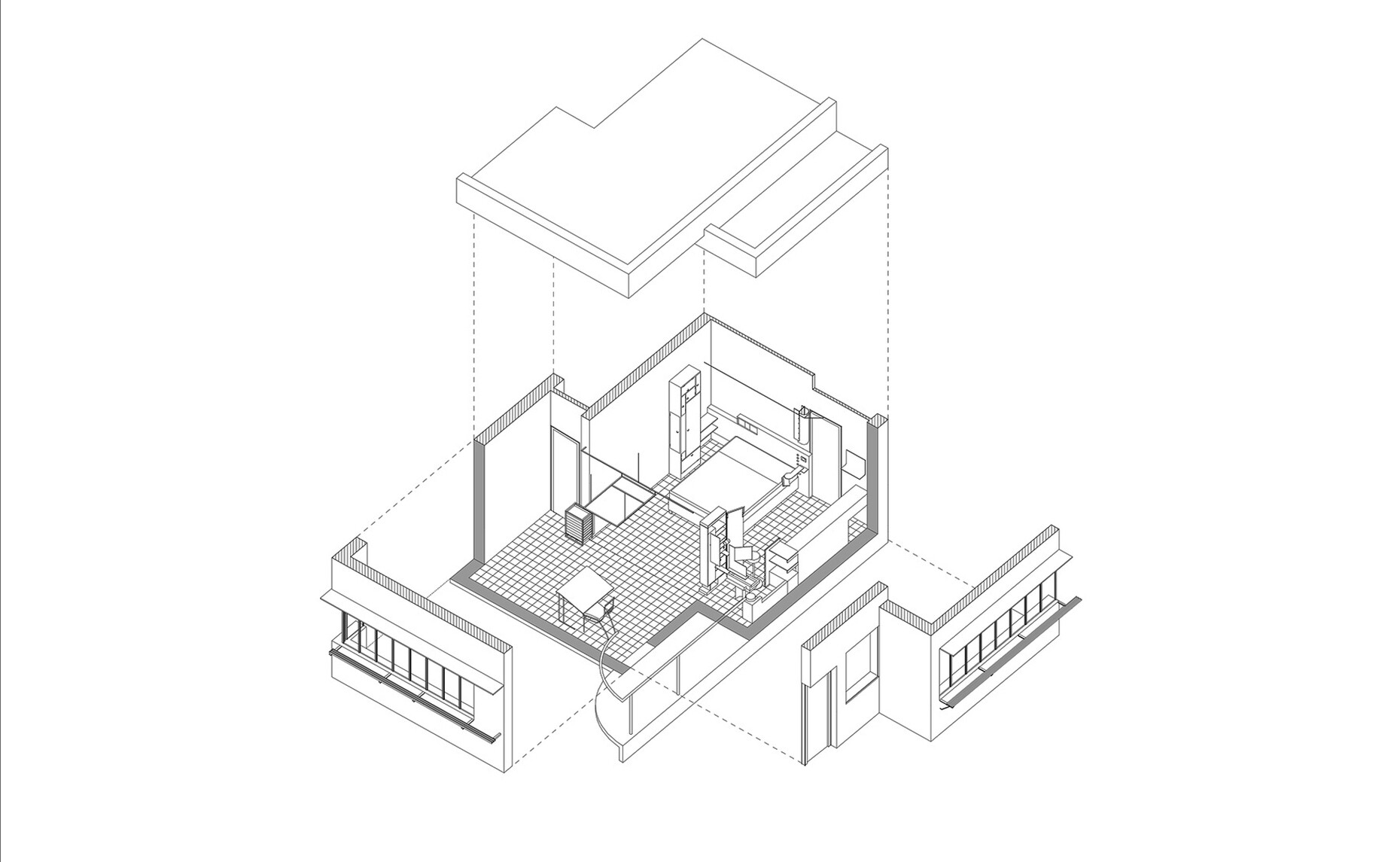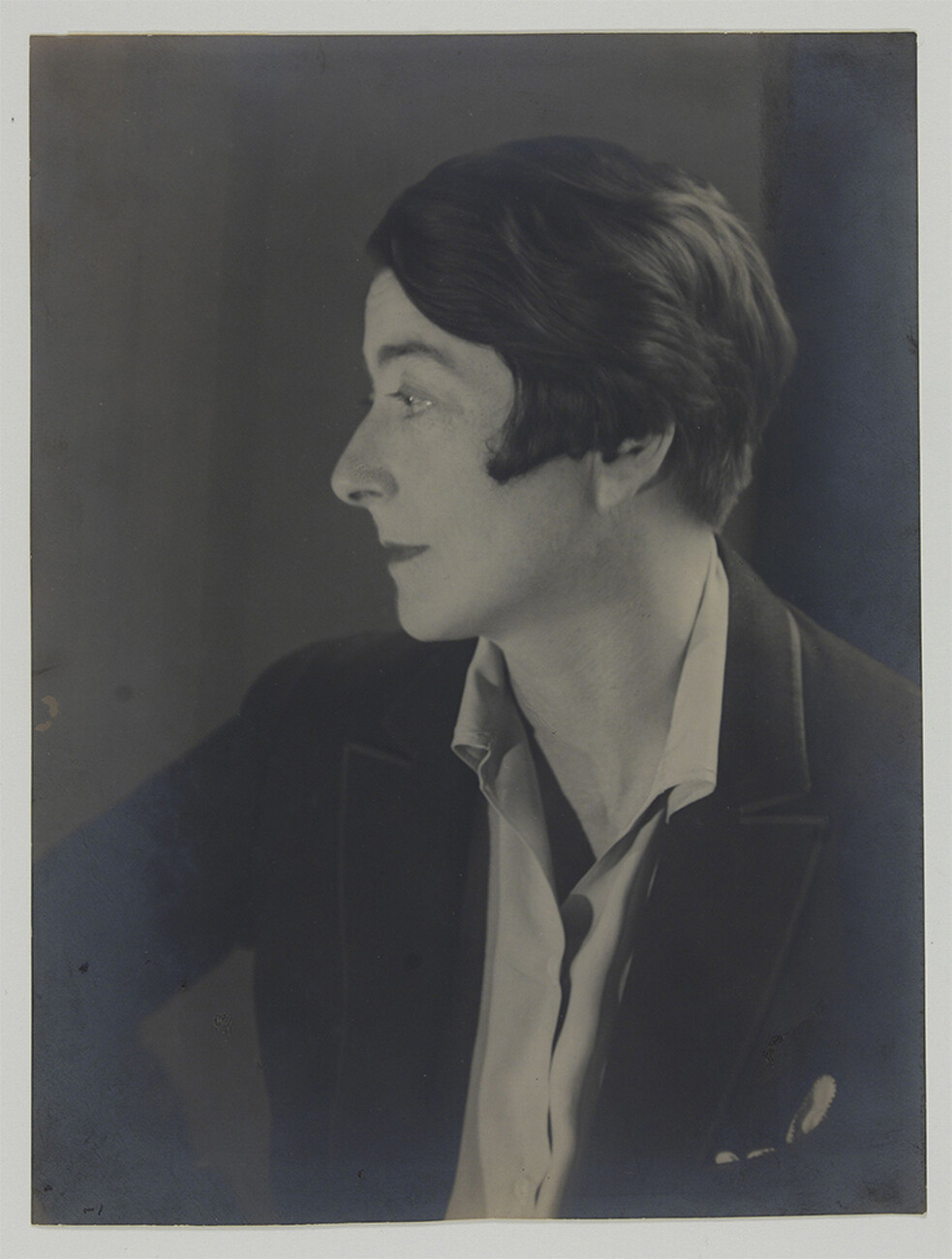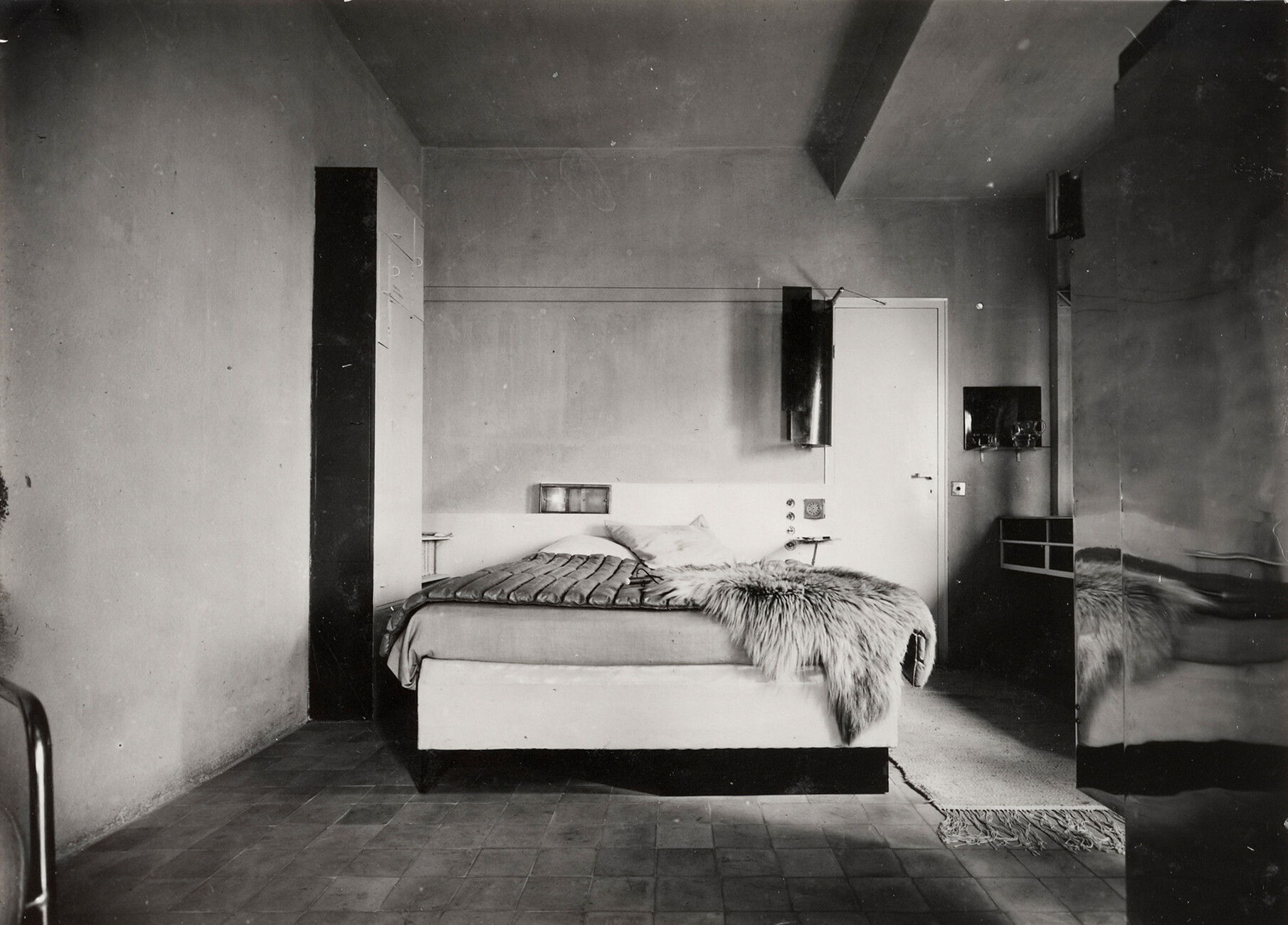Perfection with lightness
“She created a work that is completely coherent and consistent. A masterpiece of architecture,” commented architect and publicist Professor Wilfried Wang on Eileen Gray’s design for her home, known as either E.1027 or Maison en Bord de Mer. In the showroom of furniture makers ClassiCon, Wang teamed up with Carolina Leite and Peter Adam for this year’s Milan Design Week to present a reconstruction of the master bedroom Eileen Gray originally created for her home on the Côte d’Azur. The E.1027 in Roquebrune-Cap-Martin in the South of France was Eileen Gray’s first house project and served as the example that laid the basis for her later architecture projects. Built in 1926-9, the interior design, coloring, and spatial proportions that Eileen Gray developed for E.1027 remain a source of inspiration to this day. Moreover, the presentation included numerous ground plans, as well as panels with documentation and the timeline of the project, not to mention a model of the house – all intended to give visitors an in-depth idea of what Gray set out to accomplish. Thanks to three-dimensional walk-through exhibits, visitors were able to study all aspects of Eileen Gray’s work – after all, she focused not only on the function but also on the people who would use the place. Indeed, the designer and architect created no less than 25 one-off designs for the master bedroom in her house, including many unit furniture items with hinged or folding elements. Visitors could inspect these pieces of furniture, which Gray thought through down to the minutest of details, as they were reproduced faithfully in the installation in Milan, meaning visitors could also experience how they were positioned in the space. “The installation is didactic in the sense that the pieces of furniture can be touched, or rather visitors can try them out,” Wilfried Wang explains.
With its design reconstructions of the desk, the sleeping area, and the bathroom furniture complete with folding mirror, the exhibition constituted an extract from Eileen Gray’s array of ideas for E.1027’s pioneering interior design. Using up very little space, the latter blends (both in the actual house and in the ClassiCon showroom) harmoniously into the respective rooms while also possessing a sculptural quality. Wang suggests that the items of furniture were “composed” for the particular position in the room, whereby Eileen Gray also factored in the changes in light over the course of the day and the lines of vision. Moreover, the exhibition also features a part of the famous tubular steel furniture that the Modernist trailblazer designed – such as the side-table aptly named “E.1027”, or her “Bonaparte” and “Non Conformist” armchairs that offer whomever is sitting on them plenty of space to move about. With summer temperatures outside high to very high, visitors were able to enjoy the inspiring lightness of Gray’s creations – all of them designed as multifunctional items – at their leisure in the exhibition on the pleasantly cool lower floor of the showroom, with one prime example being the “Brick Screen” room divider with its flexibly adjustable elements. And the spatial composition of the exhibition also took up the uncluttered view out over the Mediterranean and the craggy coastline, which anyone lying in the master bedroom at E.1027 could enjoy. “Back in the 1920s, the E.1027 was the only house to come with panoramic windows that could be completely opened and did not possess any fixed elements,” Wang comments.
Munich-based ClassiCon is the sole legal licensee of Aram Designs Ltd., which is the world license holder to whom Eileen Gray assigned the rights to produce and distribute her designs back in the early 1970s. Each item of furniture is made faithfully to the original and also boasts a mark and a number code, which guarantee it is a product that is both faithful to the original and was manufactured in consultation with the rights holder. Eileen Gray’s unmistakable formal vocabulary was so ahead of its time that it remains contemporary today. “To be creative you have to first cast everything into question,” she once quipped.

Book tip:
Eileen Gray: E.1027
Peter Adam and Wilfried Wang (eds.)
288 pages
English
Wasmuth, Berlin 2018
ISBN 978-3-8030-0831-2
EUR 39.80









